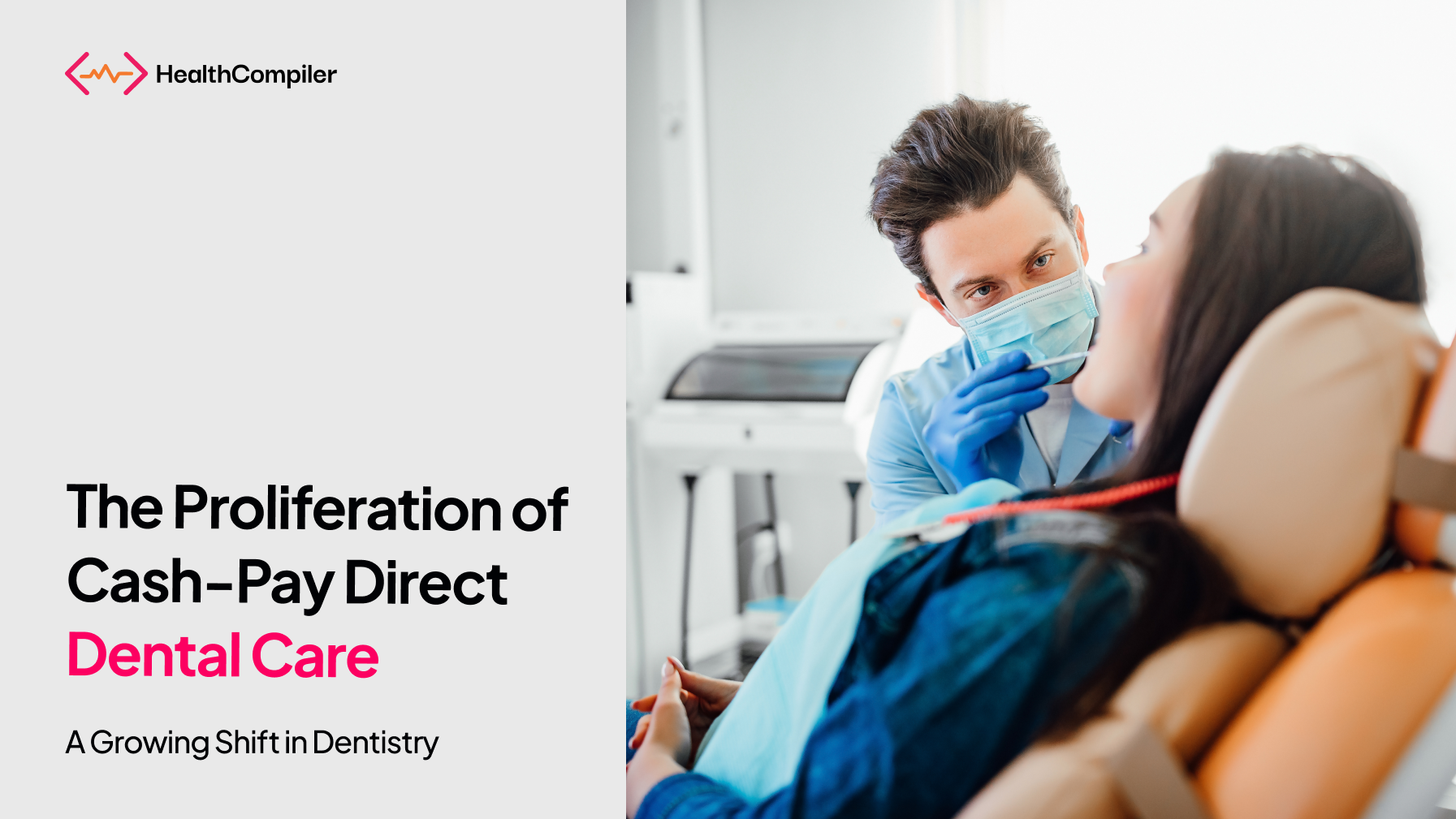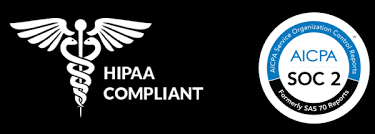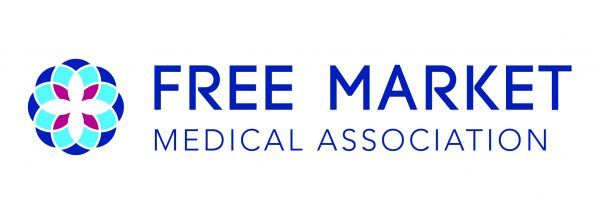The Proliferation of Cash-Pay Direct Dental Care: A Growing Shift in Dentistry

In recent years, the cash-pay direct dental care model has gained traction across the United States as patients and providers seek alternatives to the traditional insurance-driven system. This model, which emphasizes transparency, affordability, and streamlined access to dental services, is reshaping how care is delivered and consumed. As the broader healthcare industry explores models like direct primary care and specialty care, dentistry has embraced cash-pay systems for their ability to foster patient-centered care while reducing administrative burdens.
This blog explores the drivers behind the proliferation of the cash-pay direct dental care model, its benefits for patients and providers, and the challenges and opportunities it presents.
What Is the Cash-Pay Direct Dental Care Model?
In the cash-pay direct dental care model, patients pay providers directly for services without intermediaries like insurance companies. Pricing is transparent, with providers often offering flat rates or tiered membership plans that cover preventive, diagnostic, and sometimes minor restorative services.
Unlike traditional dental practices, which must navigate complex insurance billing and pre-authorizations, cash-pay models focus on delivering care efficiently while keeping costs predictable for patients.
Drivers of the Cash-Pay Movement in Dentistry
Several factors have contributed to the rise of this model in dental care:
1. Rising Costs of Dental Insurance
Dental insurance often provides limited coverage, leaving patients to pay significant out-of-pocket costs for procedures like crowns, root canals, or orthodontics. High deductibles, restrictive networks, and complex reimbursement processes have made traditional dental insurance less appealing.
2. Increasing Consumer Demand for Transparency
Patients increasingly demand transparent pricing in healthcare, including dentistry. Cash-pay models meet this demand by offering clear, upfront costs for services, allowing patients to make informed decisions without worrying about hidden fees or surprise bills.
3. Administrative Burden for Providers
Dental practices face significant administrative challenges when dealing with insurance companies, including claim denials, delayed payments, and excessive paperwork. Cash-pay models reduce these burdens, allowing dentists to focus on patient care rather than bureaucracy.
4. Accessibility for the Uninsured and Underinsured
For patients without dental insurance, cash-pay models provide an affordable alternative. Many practices offer subscription plans or bundled pricing, enabling patients to receive necessary care without breaking the bank.
5. Shift Toward Preventive Care
Cash-pay dental care often emphasizes preventive services, such as cleanings, exams, and x-rays. By focusing on prevention, these models help patients avoid costly procedures down the line, improving long-term oral health outcomes.
Benefits of the Cash-Pay Direct Dental Care Model
The growth of the cash-pay model reflects its numerous advantages for both patients and providers:
For Patients
Affordability: Transparent pricing eliminates surprise bills and allows patients to budget for care effectively.
Flexibility: Patients can seek care without being restricted by insurance networks.
Simplified Access: Appointments are often easier to book, with fewer administrative delays.
Membership Plans: Subscription-based models provide consistent access to care at predictable costs.
For Providers
Reduced Administrative Overhead: By eliminating insurance processes, dentists can streamline operations and allocate more time to patient care.
Improved Revenue Cycle: Payments are received upfront, reducing cash flow issues caused by delayed insurance reimbursements.
Patient-Centered Focus: Dentists can build stronger relationships with patients, fostering loyalty and trust.
Operational Efficiency: Practices can operate with leaner staffing and fewer resources dedicated to insurance processing.
Challenges in Scaling the Cash-Pay Model
While the cash-pay direct dental care model offers many benefits, it is not without its challenges:
1. Patient Perception
Patients accustomed to insurance coverage may initially perceive cash-pay models as expensive or risky. Education about the cost-effectiveness and value of these models is essential to overcoming this barrier.
2. High-Cost Procedures
While cash-pay models excel in preventive and routine care, they can pose challenges for patients requiring costly procedures like implants or extensive orthodontics. Practices may need to offer financing options or partnerships with third-party lenders to address this gap.
3. Market Saturation
As the popularity of cash-pay models grows, providers must differentiate their services to remain competitive. Offering unique benefits, personalized care, or additional services can help attract and retain patients.
4. Regulatory Considerations
Providers must ensure compliance with state and federal regulations, especially when offering membership plans or subscription services. Transparency and adherence to ethical billing practices are critical.
Opportunities for Growth in Cash-Pay Dentistry
Despite these challenges, the future of cash-pay direct dental care is bright. Several opportunities exist for practices looking to adopt or expand this model:
1. Digital Tools for Transparency
Technology can enhance patient experiences by providing online cost estimators, appointment booking, and payment portals. Practices that leverage digital tools will be better positioned to attract tech-savvy patients.
2. Expansion of Membership Plans
Offering customizable membership plans tailored to different demographics—such as families, seniors, or young professionals—can expand the patient base.
3. Integration of Teledentistry
Teledentistry services, such as virtual consultations and follow-ups, can add value to cash-pay practices by improving accessibility and convenience for patients.
4. Partnerships with Employers
Direct dental practices can collaborate with employers to offer cash-pay services as part of wellness programs or benefits packages, providing an alternative to traditional insurance.
The Role of Health Compiler in the Cash-Pay Model
Health Compiler enhances the cash-pay model in healthcare by providing tools that promote price transparency and accessibility. Its engagement and utilization analytics empower patients to compare prices for medical services, helping them make informed decisions and reducing the risk of unexpected bills.
Moreover, Health Compiler facilitates direct contracting between employers and healthcare providers, eliminating traditional insurance intermediaries. This streamlines interactions and can lower costs for both parties. By optimizing these processes, Health Compiler supports a patient-centered approach, ultimately contributing to a more efficient healthcare system focused on transparency and affordability
Conclusion
The proliferation of the cash-pay direct dental care model reflects a broader shift in healthcare toward transparency, affordability, and patient-centricity. By reducing reliance on insurance, this model empowers patients to take control of their oral health while enabling dentists to focus on delivering high-quality care.
While challenges remain, the continued evolution of technology, patient education, and innovative service models will drive growth in this space. For both patients and providers, the cash-pay model represents a promising future in dentistry—one where care is accessible, efficient, and built on trust.
Would you like assistance implementing a cash-pay model or exploring analytics for optimizing practice performance? Let’s discuss!



